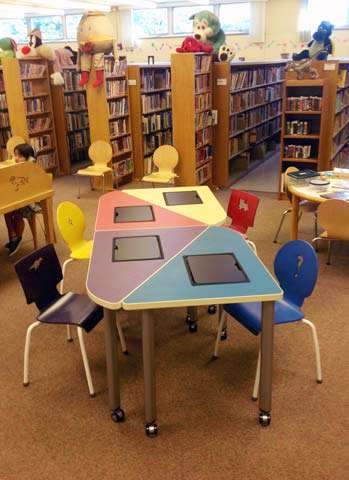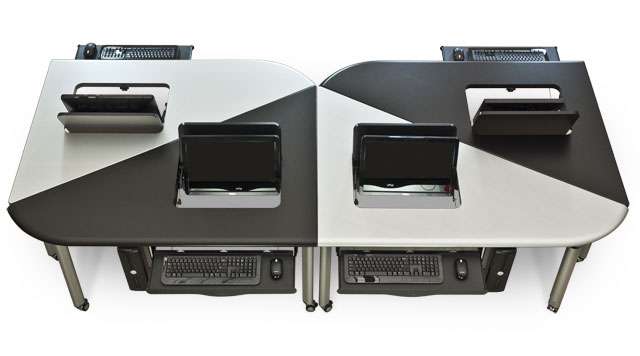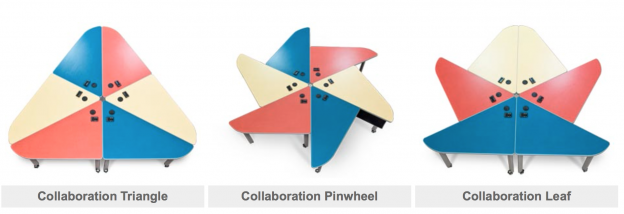Collaboration is becoming the catchphrase of modern office and education institutions. Days of the cubicle are numbered, and straight lines of desks in schools are overlooked in favor of more flexible desk arrangements.
What is collaborative learning?
Collaborative learning is the process by which students or employees form teams to tackle a significant problem. It can take place in close proximity or long distance, through teleconferencing and Internet communication technology.
Problem-based learning is a common theme in a collaborative approach to education, in which students engage with their peers and teammates to best understand the subject at hand.
How can we design classrooms that foster collaboration?
The key to collaboration is successful communication. Desk arrangements can determine the ease with which students and professors interact. SMARTdesks iGroup and Exchange tables offer flexibility in their configurations. Desk element interlock with each other in a variety of shapes; just a few options include the hexagon, pinwheel, leaf, and wave shapes, as seen below.
SMARTdesks iGroup computer collaboration tables, specially designed for K-8 environments:

SMARTdesks Exchange Collaboration Tables, for high school, university, and collaborative office use:

Two views on collaboration . . .
While recent media has stressed the importance of collaborative learning, particularly at the university level, according to this study (from Virginia Tech) there is little empirical evidence that it actually augments students’ critical thinking skills.
Nonetheless, some professors swear that a collaborative approach has improved their students performance. For an excellent story on one journalism professor’s movement from lecture-based to peer-to-peer learning, click here. And here is a study that focuse=”349″] This SMARTdesks iGroup table is located at the Hackensack Public Library in New Jersey, and specially designed for elementary school student use.[/caption]
This SMARTdesks iGroup table is located at the Hackensack Public Library in New Jersey, and specially designed for elementary school student use.[/caption]
SMARTdesks Exchange Collaboration Tables, for high school, university, and collaborative office use:

Two views on collaboration . . .
While recent media has stressed the importance of collaborative learning, particularly at the university level, according to this study (from Virginia Tech) there is little empirical evidence that it actually augments students’ critical thinking skills.
Nonetheless, some professors swear that a collaborative approach has improved their students performance. For an excellent story on one journalism professor’s movement from lecture-based to peer-to-peer learning, click here. And here is a study that focuses on computer-based collaborative learning.
Check back soon for some tips on how to make collaborative learning most effective!
What is/was your educational experience like? Do/did you participate in collaborative learning environments?



